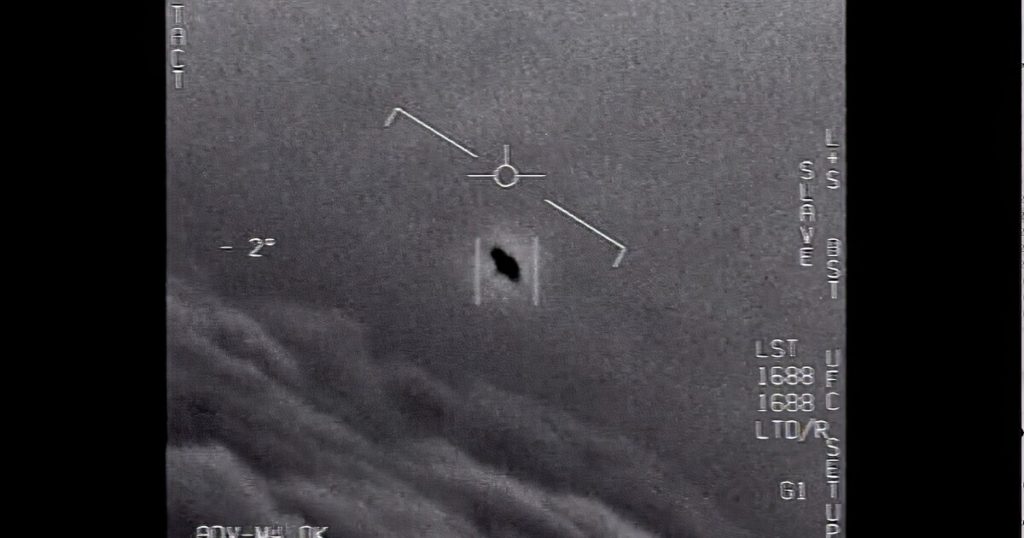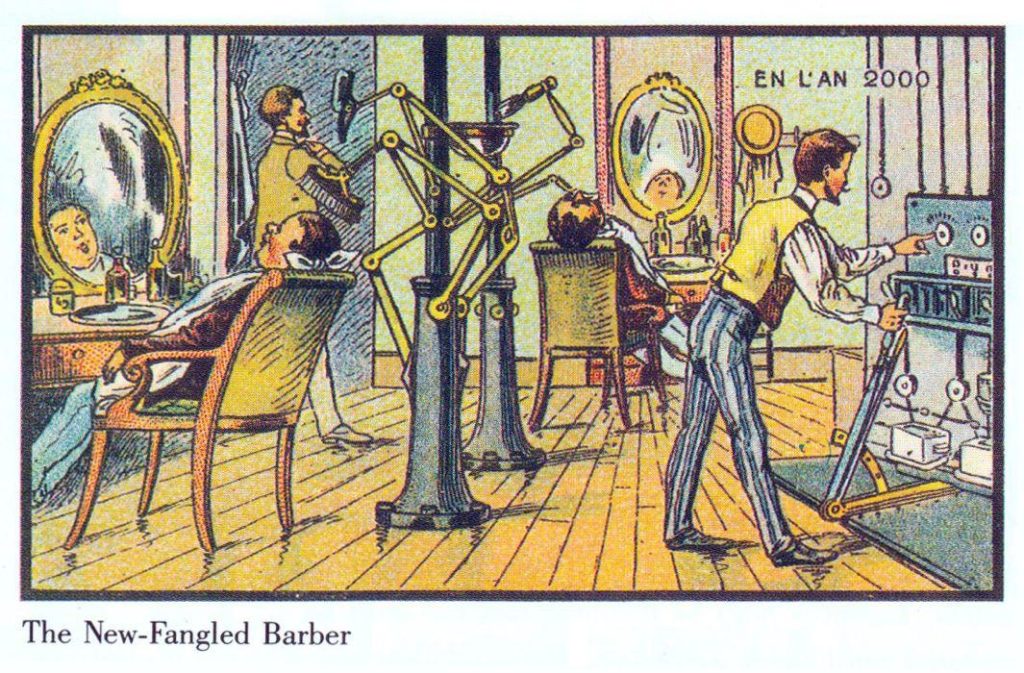
This article is related to consciousness and personal development in that the recognition of sentient Others – defined as any beings capable of communicating intentionally with us, without being part of what we would call humanity at the present time – forces humanity to reevaluate the definitions we have for ourselves and our place in the world.
Amid the uncertainty regarding the nature of UAPs (Unidentified Aerial Phenomena), one certainty is that we can no longer refer to ourselves as the pinnacle of evolution. At the very least, we must come to grips with a reduction in status to a relatively primitive species. In the most extreme scenario, we will be faced with a radical expansion of reality as we know it. Either way, it seems unlikely that dogmatic religious traditions will keep their relevance as it becomes clear to their followers that the holy scriptures were either ignorant of something of fundamental importance – or were intentionally misrepresenting the world order.
The Fermi Paradox will perhaps be familiar to the reader. In brief, it asks: if life is common throughout the universe, why do we detect no trace of it elsewhere? We humans from Earth have been broadcasting radio and TV out into an ever-expanding sphere of space for about a hundred years. If there were others like us, but older and more technologically advanced, should we not be picking up their broadcasts?
There are a number of possible explanations, including the assumption that civilizations are not only rare but tend to self-destruct, making them short-lived; no two such civilizations could be expected to overlap in time and space.
Another observation is that a more technologically advanced civilization might have found a better way to communicate than manipulation of the electromagnetic continuum – which is all we humans currently know how to do. Although we are limited in technology to the EM spectrum, human thought has conceived of potential alternatives, most notably the “ansible” of Ursula LeGuin’s creative universe. The ansible is a hypothetical device that uses pairs of entangled particles to effect instantaneous change at a great distance – say, a million light-years. I am neither a physicist nor a mathematician, but my limited understanding of quantum effects leads me to believe that such a device is in theory possible as we understand physics today. A civilization with ansibles would quickly stop using EM radiation; their broadcast sphere would hollow out and become a shell of limited thickness – easy to miss in the depths of space and time.
In any event, we do well to remember our human tendency to imagine every unknown thing in terms of our own knowledge. There are some charming illustrations from the 1900 World’s Fair depicting contemporary artists’ conceptions of daily life in the year 2000. The drawings are fanciful but quite predictive in a general way, envisioning remote learning and personal air transport, among other concepts; all of the characters are of course dressed in the immortal fashion of 1900 CE.





Looking at these illustrations forces us to recognize that we, too, imagine nonhuman civilizations in terms of what we know. We assume that civilizations will become increasingly technological and expansive, building Dyson spheres and colonizing star systems.
But what if technology transcends industry? What if a civilization’s technology evolves to require less energy? What if the population decreases from the high point reached during the industrial stage, stabilizing at a lower level? What if communication transcends EM broadcasting, instead relying on quantum entanglement – the ansible – or transdimensional effects that human science has not yet discovered?
Such a civilization would be hard, if not impossible, for us to detect. If they are significantly older than us, they might not even fit our definition of a civilization anymore.
This kind of speculation has never really been relevant due to the lack of reliable evidence for anyone actually being out there. Absence of evidence is not the same as evidence of absence; still, applying Occam’s Razor, it is more likely that such absence is the result of there being nothing to see than that the aliens (for lack of a more descriptive term) are too stealthy.

Recent disclosure by US and foreign governmental agencies has changed the equation. The existence of at least one – possibly several – intelligent entities in control of technologies beyond the capabilities of human technology answers the question of whether we are quite alone in the universe, but generates new and more unsettling ones: who is in control of these UAPs; what is their motivation; where are they from?
We will rely once more on Occam, assuming that the simplest solution that addresses all parameters of the problem is the most likely to be accurate – bearing in mind that we have very little additional information to use. Assuming that the UAPs are not products of any contemporary human technology – an assumption based on the best publicly available data – we are left with a few possible explanations:
1.UAPs are extraterrestrial in origin;
2.UAPs are artifacts or effects of secret defense programs hidden from government oversight and from the public;
3.UAPs are artifacts or effects of future human technology that is capable of transtemporal activity; i.e. humans from the future are sending them into their past, which includes our present;
4.There exists a nonhuman intelligence on Earth of which we have been ignorant, but which has been observing (and to a limited extent, interacting with) us for some time.
Of these potential solutions to the problem of UAP origin, number three is the least probable in that it requires the greatest number of additional assumptions:
Time travel is possible;
Human technology will at some future date develop the capacity for time travel;
Having achieved this technological tour de force, future humanity is unable or unwilling to do more than observe the past, avoiding interaction or direct communication to the extent possible and relying on deception when interaction is unavoidable.
We have no reason to believe that time travel is or will ever be possible. All the other assumptions aside, and they are of significance, this alone disqualifies number three as the probable solution. Of which nothing can be said, it is better to say nothing (to mangle Wittgenstein).
Considering the first possible solution – that of extraterrestrial origin for UAPs: this is the second least probable solution, as it relies on the assumptions described above, including the nature of technological development in a hypothetical extraterrestrial civilization. Such a civilization is possible within our current understanding of physics, although we cannot account for the movement of the craft (if we may be allowed the term) that we have observed. Still, these are significant assumptions.
Now to option number two: the secret private defense industry programs. This possibility is well within reason. The main objections relate to motivation, which is predictable given that the UAPs are in this case assumed to be under human control. Where would be the advantage to this secretive private industry in revealing themselves so overtly to military pilots and EM surveillance? If their success depends on secrecy – which is part of the main assumption – then it would be colossal foolishness to harass military aviation and circle nuclear installations to tamper with the arming status of the warheads. Another objection is that of the defense sector itself: the observable characteristics of UAPs (being non-flight aerial displacement (no visible lift topography or means of propulsion), instantaneous high acceleration (beyond what any known material structure could withstand), hypersonic velocity without signature (no sonic booms or contrails despite speeds in excess of Mach 5), low observability (the craft generate visual interference making them harder to detect), and transmedium travel (the ability to transition at high speed from air to water or vice versa) ) represent a technological advantage over any known human technology on the order of one hundred to one thousand years. There is one way this could be explained within the parameters of this model: if a private and secret defense contractor had developed an AI, or artificial intelligence, that had evolved so as to transcend human capacity for thought; if this contractor had in its possession such an AI, it might stand to reason that the AI could resolve problems of physics that remain intractable to human science. But this is still quite an assumption.
So on to the fourth and final potential solution: there is a nonhuman intelligence on Earth of which we have been ignorant, but which has been observing (and to a limited extent, interacting with) us for some time. This is possible. It requires no additional explanation, elegantly resolving even the question of why we don’t find traces of extraterrestrial communication out in space. If a far more advanced (yet perhaps technologically stable) civilization should exist on Earth, it may well have gone nearly undetected until the recent sudden exponential surge in human technological development. It may also be significant that one of the UAP observables is transmedium travel while 70 percent of Earth’s surface is ocean. A nonhuman advanced civilization would find it easier to avoid detection if it were under the ocean’s surface, or underground with undersea access. This solution requires only that which it proposes: the existence of a hitherto unknown civilization, more technologically advanced than us, with whom we share this planet although we knew it not.
Occam’s Razor is a tool; it is not a divining rod for truth. Sometimes the improbable turns out to be reality. Still, it seems interesting that the simplest and most elegant solution to the problem of UAP origin should be that we have company right here at home, and that they are far more familiar with us than we are with them.